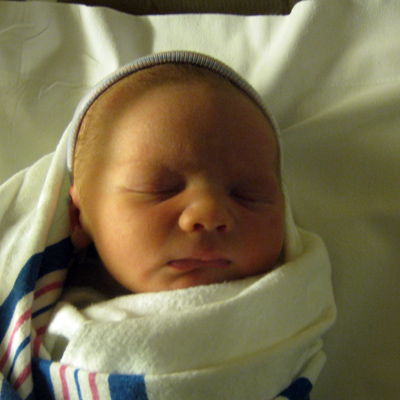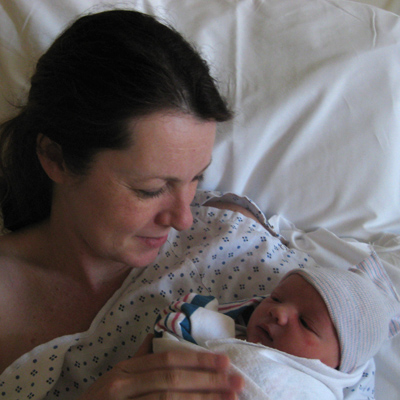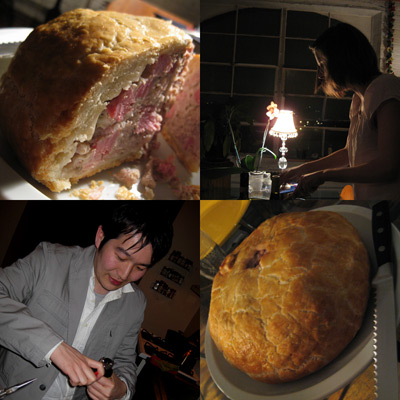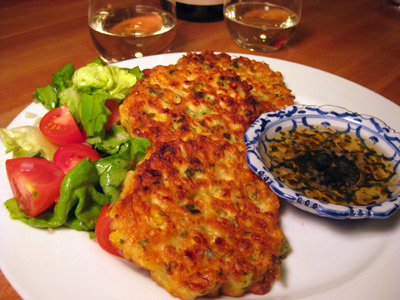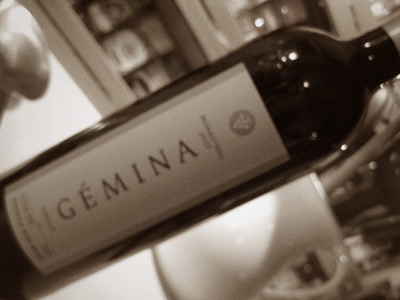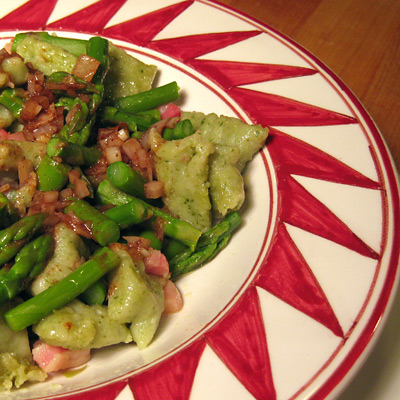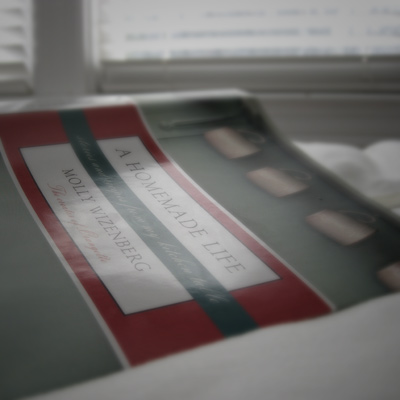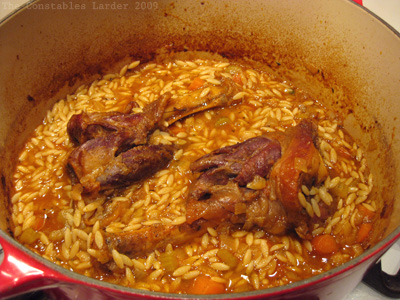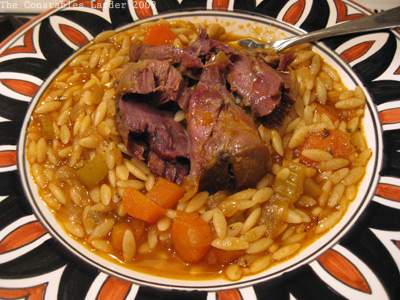I wonder, as I stumble through the flurry of activities that inevitably follow the arrival of a newborn, if a slight halo of awe still hovers around me. When our daughter arrived almost 4 years ago, the C section at 34 weeks was mentally intense and nerve wracking, albeit ultimately wonderful. Natural childbirth (and for little James, Lisl chose to go entirely natural, without pain medication), on the other hand, was incredibly intense in a physical way and in some ways very surreal.
I was surrounded by women supporting a woman doing something powerful and fundamental, common and yet never ever mundane. It was amazing. The object of my awe is, of course, Lisl. Such strength and bravery through the 41 hour labor process was magnificent to behold. I know that these are not unique feelings in a husband after the birth of a child, yet the very ubiquity of my emotions is one of the quirks of this thing called childbirth. It is commonplace and continual, and yet so colossal every single time. I never quite grasped that until now.
However, the title of this blog post isn't "ruminations on childbirth". Food! I wanted Lisl's first meal home from the hospital to be excellent, but I also knew that I was only going to have sporadic time available... it needed to be something I could start the night before. Richard Olney has a great recipe for beef and beer stew, but I decided to try merging two different Julia Child inspirations: Onion Soup and Carbonnades a la Flamande (beef and onions braised in beer).
French onion soup gets so much flavor from the long cooking and carmelization of the onions, so I brought that step to this recipe. The sweetness of the extra-carmelized onions complements the beer really well. I did not use any beef broth or water; rather the beef and onions was braised entirely in a "black and tan", i.e. one stout and one pale ale (there's lots of flexibility on beer choice -- it's very personal preference: Julia Child calls for a pilsner-type beer, and this is also really good with a Belgian abbey-styled brew).
I cooked the braise for a very long time on low heat, and the results were rich and delicious. When it received high compliments from both Lisl and my visiting mother, who got me started with a love of cooking, I knew that this was a winner. I do not have a photo of the plated dish, but with new baby and visiting family, I'm sure you will let me off the hook!
Carbonnades a la Flamande (Black and Tan)
(Beef, Onion and Beer Stew)
3 lb chuck steak
5 or 6 medium to large yellow or spanish onions
3 tbsp unsalted butter
1 tbsp olive oil
2 tbsp brown sugar
salt
handful of parsley w/ stems
1 bay leaf
1 bottle of a good stout beer (Guinness most common)
1 bottle of pale ale (Bass or Harp)
Pre-heat oven to 300F.
Cut the beef into slices about 2 inches by 4 inches, and 1/2 inch thick. In a dutch oven, heat a splash of olive oil on medium-high heat until a drop of water sizzles, then brown the beef in batches, adding more oil as needed between batches.You just want to sear the outside, but not fully cook the beef. Cook the meat in batches so that the beef is not packed in too closely together. Set the browned beef and any juices aside on a large plate or bowl. Deglaze the bottom of the pot with a small amount of water and pour the juices over the beef.
Place the pot back on the stove top. It is now time for the onions.
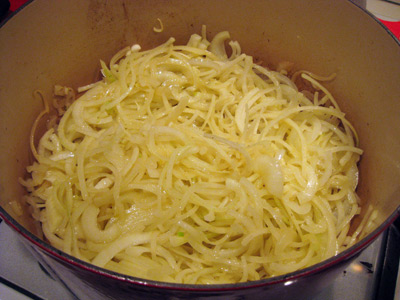
Peel the onions, cut them in half, and then slice them very thin. On low, heat 3 tbsp of butter and 1 tbsp of olive oil in a dutch oven or stewing pot, and slowly saute the onions for 15 minutes. Stir in 1/2 tsp of salt and 2 tbsp of brown sugar, turn up the heat to moderate, and cook for 30 to 40 minutes until the onions are golden and starting to brown. Turn off the heat and remove onions to the side.
Create a layer of half the beef on the bottom of the pot, then spoon half the onions on top and spread around. Tie the parsley and bay leaf together with kitchen twine and place on top of the onions. Sprinkle a pinch of salt around.
Then create a layer with the rest of the beef, and top with the remaining onions and a pinch of salt sprinkled around.
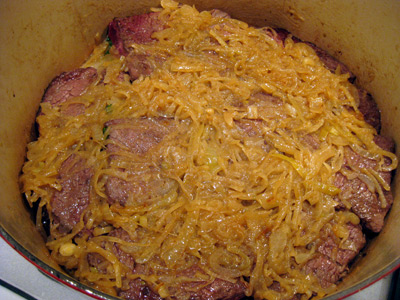
Pour in the beer until the beef and onions are just covered. For me, it took the full contents of both the bottle of stout (in my case, I used Keegan's Mothers Milk) and bottle of pale ale. Bring the stove burner back up to a moderate flame. When the beer is just starting to simmer, cover and place in the oven.

Cook for 2 hours and then uncover and continue to cook for another hour or two until the liquid has concentrated down somewhat and the meat is completely tender. Skim the fat oil off the top. Taste the remaining liquid, and adjust the flavor with a sprinkle of salt or brown sugar if you desire.
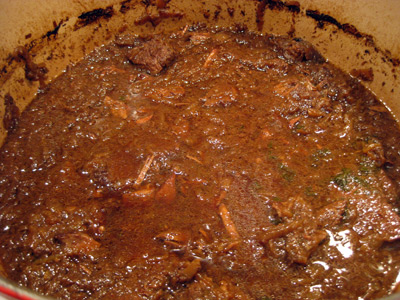
The above picture was actually taken after I had served much of the top layer of beef, which is why the meat looks so shredded because it really falls apart at the lightest touch at this point. However, I wanted to show color and consistency.
I served this with basmati rice and swiss chard sauted with a touch of lemon juice, and my father brought the most amazing red wine. It was a fitting celebration of Lisl and the new baby.

